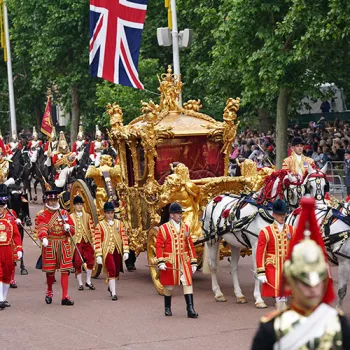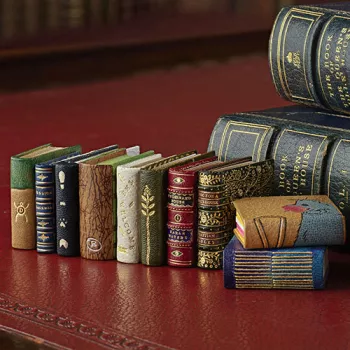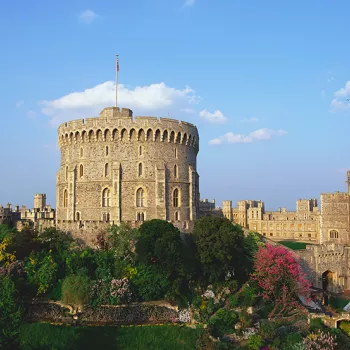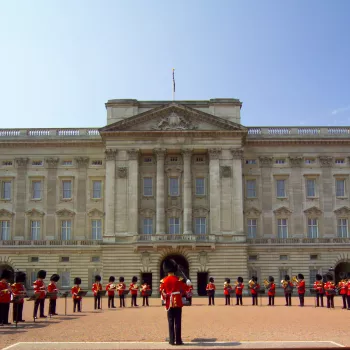The Crown Jewels: Coronation Regalia
Everything you need to know about the famous collection.
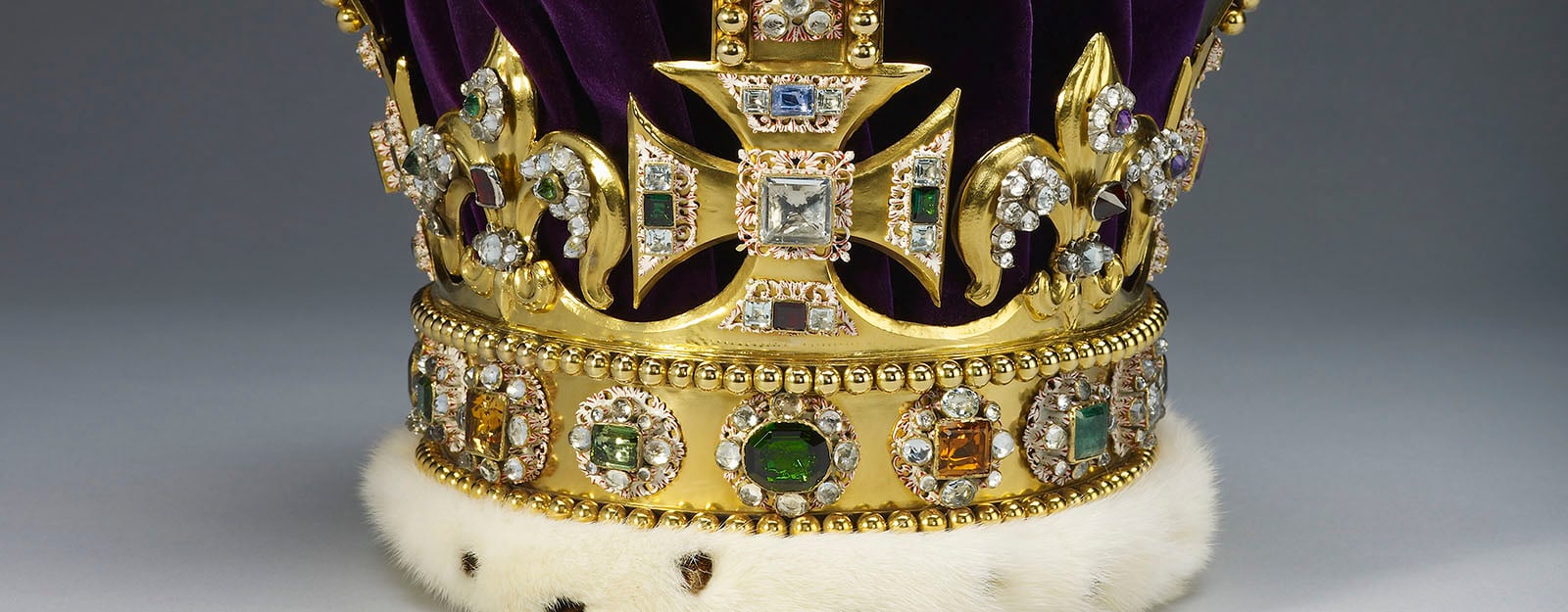
Reading time: 5 minutes
What are the Crown Jewels?
The Crown Jewels are the most famous of the nation's treasures. They include over 100 extraordinary items including orbs, sceptres, and crowns. All are closely connected with the status and role of the monarch. The oldest of these is the 12th-century spoon used to anoint the king or queen at the coronation.
Housed at the Tower of London, the Crown Jewels are the most complete collection of royal regalia in the world. They are used at occasions such as the coronation service and the State Opening of Parliament. Part of the Royal Collection, the Crown Jewels are held in trust by the monarch for the nation.
The Coronation Regalia
At the heart of the Crown Jewels are the Coronation Regalia. These are the sacred objects used in the coronation ceremony. The collection includes St Edward's Crown, the Imperial State Crown, the Sovereign’s Sceptre with Cross and the Sovereign’s Orb.
St Edward’s Crown
This spectacular solid gold crown is used at the moment of crowning during the coronation ceremony.
- It weighs 2.07 kg (nearly 5lb) and is decorated with rubies, amethysts and sapphires.
- It was made for the Coronation of Charles II in 1661 as a replacement for the medieval crown melted down in 1649, after the execution of Charles I.
- The lost medieval crown dated back to the 11th century and belonged to the royal saint, Edward the Confessor.
- St Edward's Crown was last used for the crowning of King Charles III in 2023.
St Edward's Crown ©
Imperial State Crown
The Imperial State Crown was made for the Coronation of King George VI in 1937 replacing a crown made for Queen Victoria.
- The crown is set with 2,868 diamonds, as well as several famous jewels.
- It includes St Edward's Sapphire, said to have been worn in a ring by Edward the Confessor.
- The crown also includes the Cullinan II diamond, the second largest stone cut from the great Cullinan Diamond. The Cullinan Diamond is the largest diamond ever discovered.
- The Imperial State Crown is worn by the monarch to leave Westminster Abbey after the coronation ceremony.
Imperial State Crown ©
Sovereign’s Sceptre with Cross
The Sovereign’s Sceptre was made for the Coronation of Charles II in 1661 and has been used at every coronation since.
- The Sceptre includes the magnificent Cullinan I diamond, the largest colourless cut diamond in the world.
- In 1911 the Crown Jeweller, Garrard, mounted the diamond in the Sovereign's Sceptre. The diamond is so large that the Sceptre had to be reinforced to take its weight.
Sovereign’s Orb
The Sovereign’s Orb is a representation of the monarch’s power. It symbolises the Christian world with its cross set on a globe.
- The gold Orb weighs 1.32kg and is mounted with emeralds, rubies and sapphires surrounded by diamonds and pearls.
- During the coronation service, the Orb is placed in the right hand of the monarch. It is then placed on the high altar before the moment of crowning.
The Sovereign’s Sceptre with Cross and Orb ©
Coronation Spoon & Ampulla
The oldest item in the Coronation Regalia is the 12th-century Coronation Spoon.
- It is the only piece of royal goldsmiths' work to survive from that century.
- During the coronation ceremony the spoon is used to anoint the monarch with holy oil.
- The gold Ampulla or flask holds the holy oil. The head of the eagle is removable with an opening in the beak for pouring the oil into the spoon.
Queen Camilla’s Crown
- Queen Camilla’s Crown, formerly known as Queen Mary’s Crown, was renamed in 2025.
- It was designed for the Coronation of Queen Mary in 1911.
- At the 1911 Coronation the crown contained three large diamonds - the Koh-i-nûr, Cullinan III and Cullinan IV. These were later replaced with replicas.
- The crown was reset with the Cullinan III, IV and V diamonds for the Coronation of King Charles III and Queen Camilla in 2023.
The Cullinan Diamond
The magnificent Cullinan Diamond is the largest diamond ever found, weighing 3,106 carats. The diamond was discovered in modern-day South Africa in 1905. It was named after the chairman of the mining company, Thomas Cullinan.
Over a period of eight months, three polishers worked for 14 hours a day to cut and polish nine large stones from the original diamond. In total 97 small brilliants were also created.
The two largest stones are Cullinan I and Cullinan II. They are set in the Sovereign’s Sceptre with Cross and the Imperial State Crown.
What happened to the earlier Crown Jewels?
The medieval Crown Jewels were sold or destroyed in the mid-17th century.
In 1649, at the close of the English Civil War, Charles I was executed, and items from the Royal Collection were sold by Parliament to fund the new government. Jewels were sold and items of silver and gold were melted down and turned into coins.
By 1660 the monarchy was restored, and Charles II ordered the creation of new regalia for his Coronation in 1661. These make up a large proportion of the Crown Jewels which can be seen today.





